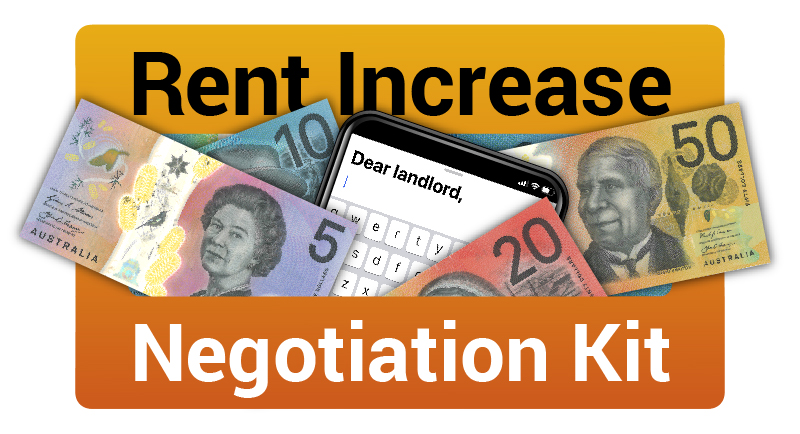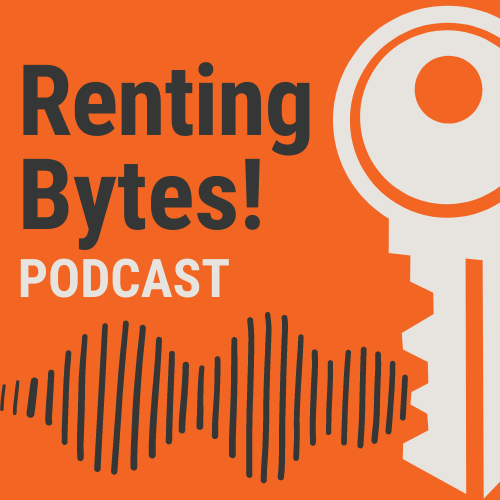Landlords hiking rents: what can we do?
Jemima Mowbray • 23/08/2022
Rents are increasing
Every renter knows the anxiety of finding a letter in the mailbox or hearing the ping from our inbox telling us we've got mail from the landlord. Is it an eviction notice, your life about to be uprooted? Or – just as you thought you’d got the budget under control – is the rent about to increase? At the moment getting a rent increase notice is a pretty common experience across NSW. And many are shocked by just how high the proposed rent increase is.
Over the past year we have seen rents in NSW – and across Australia – increasing at a significant rate and by a significant amount. While properties values seem to be on hold or even falling in the housing market for sale, low vacancy rates in the rental market means this isn't being reflected in a drop in rents. A very tight market is instead empowering some landlords to test the limits on how far they can push rents – not just when setting the rent when listing a property, but within existing tenancies.
Our Rent Tracker Postcode Tool shows us the median rent across NSW has increased by 10.6% since last year. Regional areas of NSW such as the Central Coast, Central West and Murray, and the Richmond Tweed have seen increases of 13% or more. Metro areas have also not been immune, with rents in the Eastern suburbs of Sydney increasing by over 13% and the Ryde area seeing an increase in rents of 14.9% over the past year.
It seems the lack of housing, inadequate tenancy rights, fire, flood and pandemic, have combined to create the severe rental crisis we are now experiencing. Sadly, some landlords and agents are using this as an opportunity to push tenants even further. How can a renter push back if they receive an excessive increase? We know this is a systemic problem. So what can be done to create a better systemic approach to rent prices?
As a renter: what can you do when you get a rent increase?
When you get a rent increase notification, the first thing to do is check your legal rights and check if the notice is valid (see our Rent Increases factsheet). In NSW rent can only be increased once every 12 months when you are in a periodic agreement – so, outside of the fixed term. Where you agree to a rent increase within a fixed term agreement the same limit applies – only one rent increase each year is allowed.
There is no set limit on the amount the rent can be increased, but if the rent increase seems excessive or makes the rent unaffordable you can – and should – try to negotiate with their landlords. See if you can come to a compromise.
It can be daunting to negotiate with a landlord or agent. But there are things you can do as a renter to increase the likelihood of success and reduce stress – see our Tips: Negotiating with the landlord resource or listen to the latest episode of our podcast Renting Bytes – Negotiation for renters.
When negotiating around a rent increase explain why you think the increase is too high, comparing rents for similar properties in the local area. Our Rent Tracker postcode tool gives you an idea of what is happening with rents in the local area in terms of bonds lodged recently. You should also try to check in with your neighbours about the rent they are currently paying. This can give a better indication of rents in properties with sitting tenants – something you'll want to consider alongside recent bond lodgment data. You also want to factor in here that if you are renting a property in the lower end of the rental market, and the increase you've received suddenly pushes you into the top market percentile, then it's more likely the increase you've just received is excessive.![]()
In negotiation, also consider sharing that you'll struggle to pay an increase. You might present for example evidence of how little wages have grown versus the rate of the rent increase you've just received. While the Tribunal is restricted from considering a renters' ability to pay an increase when determining whether the rent increase is excessive, during a negotiation this kind of information can help the landlord see the situation from a renters' perspective.
If negotiation is unsuccessful then a renter can take the increase to the NSW Civil and Administrative Tribunal (NCAT) to challenge it. But it is a renter's responsibility to prove to the Tribunal that their rent increase was excessive – and this can prove challenging, especially given that the Tribunal does not take into consideration hardship experienced by the tenant.
The Tribunal will look instead at the condition of the property and any upgrades or downgrades that have occurred since the last rent increase. It will also consider evidence provided by the tenant about the rent charged for similar homes (this is why consulting your neighbours can be very useful, even if it can prove time consuming).
Renters can also use our new Rent Increase Negotiation Kit. This includes a letter generator which creates a personalised letter and data summary for your postcode and residence. You can use this in your negotiations or as supporting evidence at the Tribunal if you do decide to challenge the increase.
Broader solutions: what can we do about skyrocketing rents?
It's a lot of work for a renter to mount an excessive rent increase challenge at the Tribunal. The renter is responsible for applying to the Tribunal, and as the applicant they bear the onus of proof. This despite the fact that much of the information required to prompt full consideration of the matters the Tribunal may consider is not easily available to them, and generally much more readily available to landlords.
Most renters will also hesitate before taking a rent increase to the Tribunal, because of the risk associated with such an undertaking. When faced with a rent increase challenge some landlords will opt to evict their tenant and relist the property instead of negotiating. This is something they can do because the NSW Residential Tenancies Act allows landlords to evict renters for 'no grounds' (or 'no reason'). Though in truth there is a reason – the 'no grounds' eviction is simply masking a very bad reason.
It is also quite possible at the moment that a renter who does decide to challenge a rent increase as excessive at the Tribunal will be unsuccessful. In considering these cases, the Tribunal is to have regard to such matters as the market level of rents for comparable premises in similar locations. Because the market rent around them has increased so significantly renters are increasingly finding themselves priced out of what previously was an affordable rental for them. But there are no alternative, more affordable options for them to move on to.
This is a real problem – and one we're seeing over and over again. It is a problem with serious implications for the stability, liveability and affordability of the private rental market.
Setting fair limits on rent increases
Putting some fair limits on rent increases during a tenancy and when setting rents could provide an immediate solution to take off some of the financial pressure renters are currently feeling as a result of spikes in rent prices.
What could this look like? In terms of setting fair limits on rent increases during a tenancy - we luckily have an already existing example of a rent increase framework successfully implemented in Australia. The ACT recently introduced a framework for rent increases that sets a threshold for ‘reasonable’ increases of 110% of the change in CPI since the last rental increase, or since the tenancy agreement began.
Under the ACT model a reasonable limit does not rule out or preclude an increase over this amount. Instead the limit simply acts as a ‘threshold’ determining who bears the onus of proof to justify a rent increase. Where a landlord wants to increase rent by more than the set limit (the threshold) they are required to seek the renter’s consent for the increase amount. Where consent is not provided the landlord must apply to the Tribunal for the increase and be able to demonstrate and provide sufficient evidence as to why the increase above the threshold is justified.
So as an example, if I got my last increase last September (2021) and my rent was increased to $650 at that point, the following would be how the threshold would be calculated:
Threshold calculation: 1.1 x (rent CPI in 2022 114.6 - rent CPI in 2021 114.3)/rent CPI in 2021 114.3 x 650
The threshold limit for a rent increase would be $1.90. If the landlord proposes to increase my rent in September (2022) by more than $1.90 and I don't agree, it would be on the landlord to apply and convince the Tribunal that the increase is justified. Sure the calculation looks a little complicated, but thankfully in the ACT the ACT Civil and Administrative Tribunal and others (including the ACT Tenants' Union) have set this all out pretty clearly. There is even a community initiated web-based rent increase calculator to help renters work it all out.
Ensuring people can afford to keep a roof over their head
Housing is an essential service. Having a safe, liveable, stable home is vital to ensure you can live a decent life. But often we don’t seriously and from a regulatory standpoint consider housing as an essential service. There are other basic needs – other essential services – where cost is regulated, whether that’s health or education or energy. And that is to ensure these services are safe and accessible for everyone.
We can and should do this for rental housing as well.




